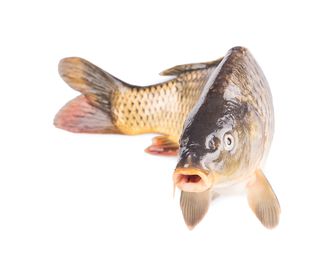Australia's Surprising Weapon Against Invasive Fish: Herpes

The Australian government recently announced an unusual initiative to eradicate a long-standing animal pest problem.
To rid their streams and rivers of invasive European carp crowding out native freshwater species, officials plan to begin introducing a strain of the herpes virus — Cyprinid herpesvirus 3 (CyHV-3), or "carp herpes" — into fish populations.
In a statement released May 1, Australian Department of Agriculture and Water Resources (DAWR) officials described their National Carp Control Plan, which will be developed over the next two and a half years at a cost of approximately AU$15 million (about US$11.2 million) and potentially deployed by 2018. [Alien Invaders: Photos of Destructive Invasive Species]
Research by the Commonwealth Scientific and Industrial Research Organisation (CSIRO) has already determined that the virus kills European carp quickly, and that it does not develop in native fish, in other introduced fish species or in other animals — including humans.
Also known as Koi herpes virus (KHV), this viral infection has only ever been observed as naturally occurring in carp, according to a diagnostic manual published online by the European Union Reference Laboratory for Fish Diseases (EURLFD).
The virus progresses quickly, with the rate of mortality in carp increasing during an outbreak, the EURLFD explained. Inflammation of the organs and gills, and secondary bacterial infection are the primary causes of death in infected fish.
European carp (Cyprinus carpio) are also called common carp or koi. They originated in central Asia but have been introduced in other countries so successfully that they are currently the most widely distributed freshwater fish species on Earth. Carp have been known to reach lengths of 3.9 feet (1.2 meters) and can weigh up to 132 lbs. (60 kilograms). However, on average, they're much smaller and lighter — 1 to 3 feet (0.3 to 0.9 m) and 9 to 11 lbs. (4 to 5 kg).
Sign up for the Live Science daily newsletter now
Get the world’s most fascinating discoveries delivered straight to your inbox.
Carp were first brought to Australia over a century ago, and were designated as a notable aquatic pest species in the 1960s, the DAWR said in a statement. Under the right conditions, carp can breed very rapidly, and their ability to tolerate a range of freshwater conditions — including rivers that are briny or low in oxygen — allowed them to increase dramatically in Australian waters, outcompeting native fish and gaining a presence in every Australian state except the Northern Territory.
In fact, the DAWR estimated that in one freshwater region — the Murray-Darling Basin — carp make up approximately 80 to 90 percent of the resident fish.
But carp herpes could provide an effective means to target the invasive species, according to the DAWR.
"Under optimal conditions, carp herpes virus will kill up to 95 percent of individual carp," DAWR officials said in a statement.
The Australian government considered using carp herpes to combat the invasive fish over a decade ago; years of testing went into determining whether this could be done safely. But before launching the initiative, much more research will be required to test how the virus would be managed, the level of risk involved to amphibians and other animal species, and other possible ecological impacts.
To that end, government officials will collaborate with representatives from environmental groups and the local industry, as well as residential communities that might be affected, DAWR officials said.
Follow Mindy Weisberger on Twitter and Google+. Follow us @livescience, Facebook & Google+. Original article on Live Science.

Mindy Weisberger is an editor at Scholastic and a former Live Science channel editor and senior writer. She has reported on general science, covering climate change, paleontology, biology, and space. Mindy studied film at Columbia University; prior to Live Science she produced, wrote and directed media for the American Museum of Natural History in New York City. Her videos about dinosaurs, astrophysics, biodiversity and evolution appear in museums and science centers worldwide, earning awards such as the CINE Golden Eagle and the Communicator Award of Excellence. Her writing has also appeared in Scientific American, The Washington Post and How It Works Magazine.
Most Popular



